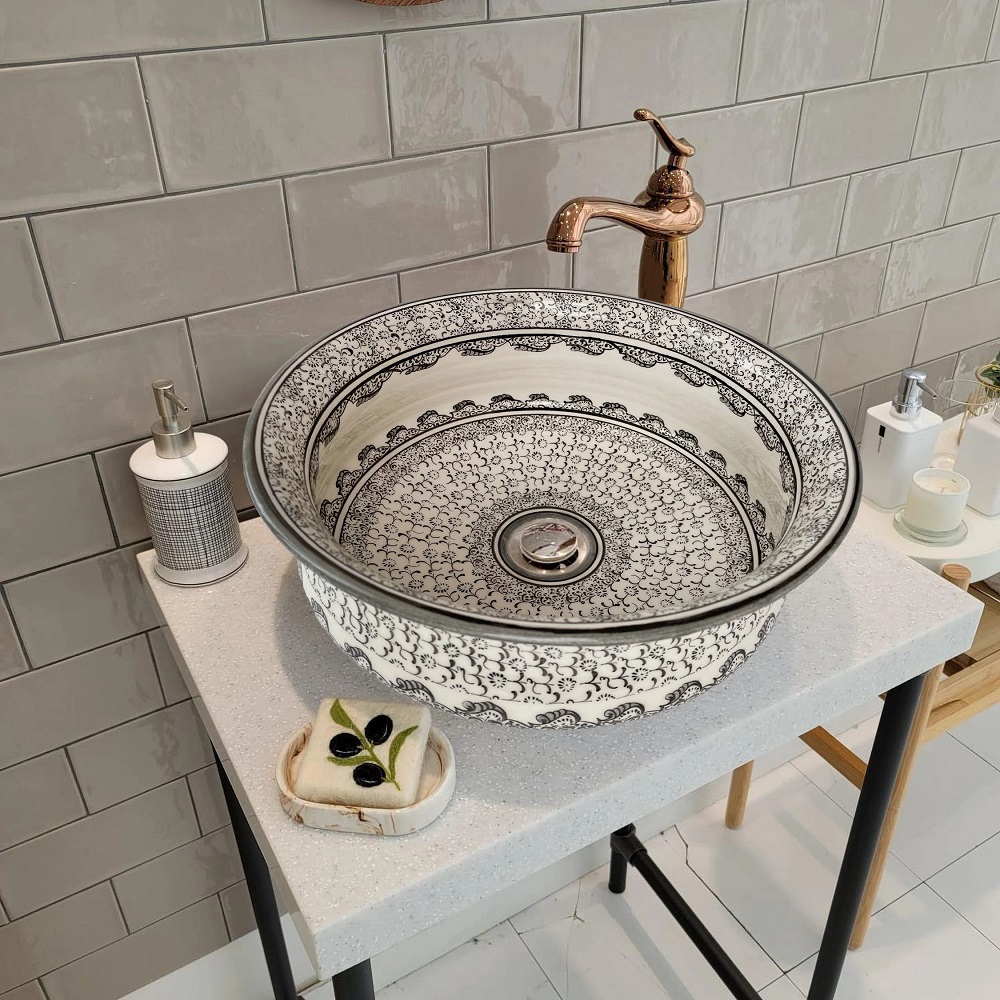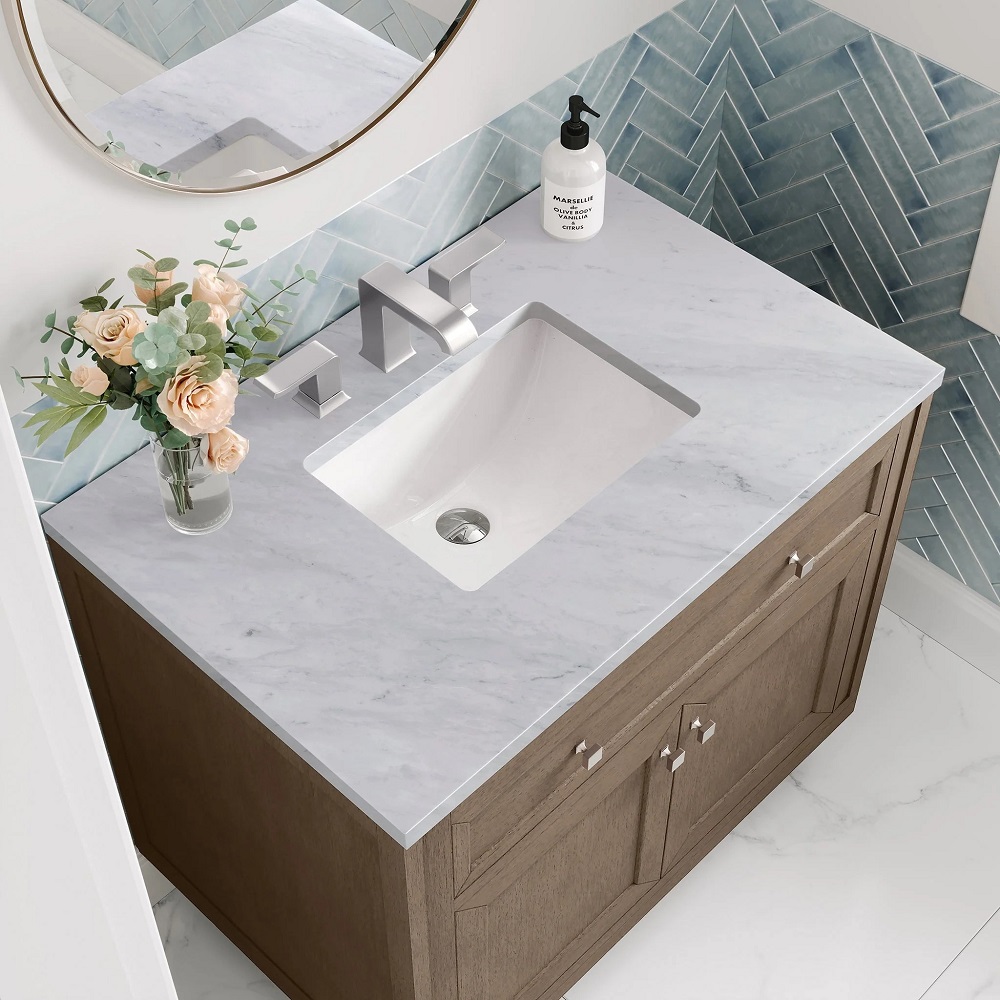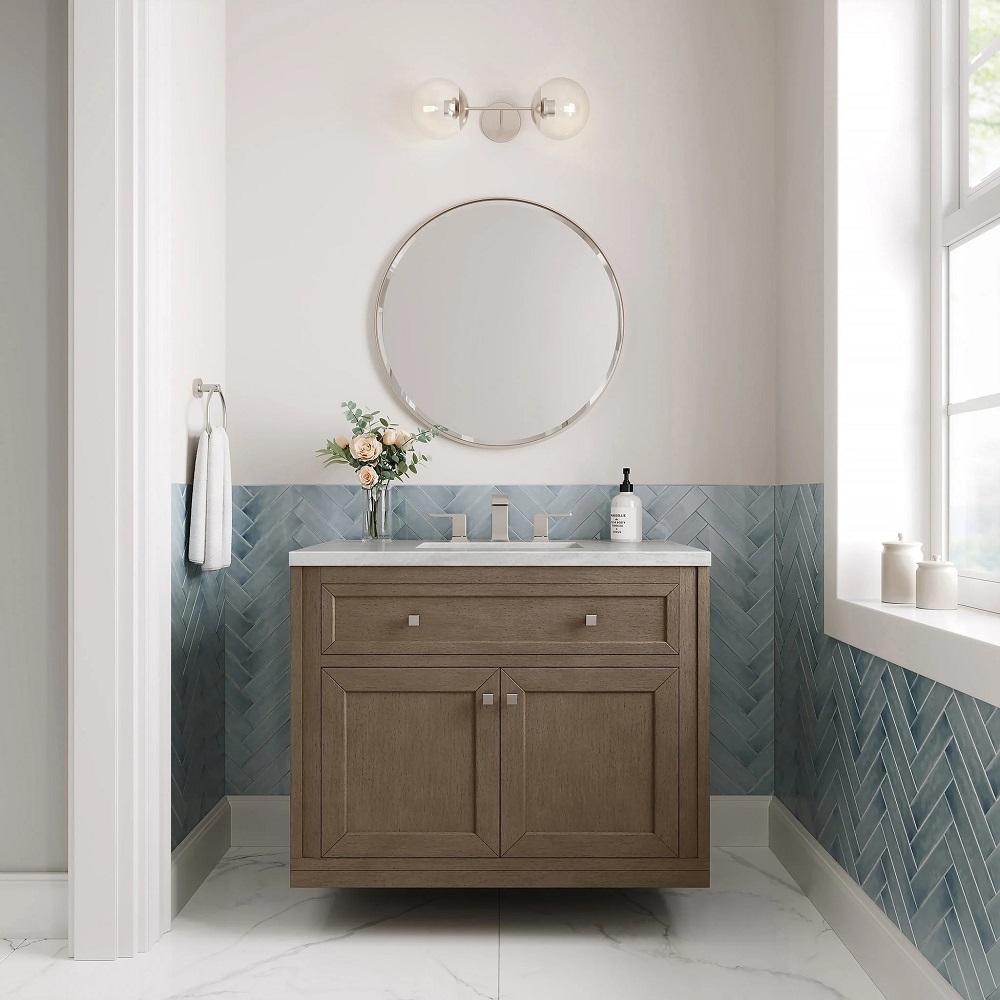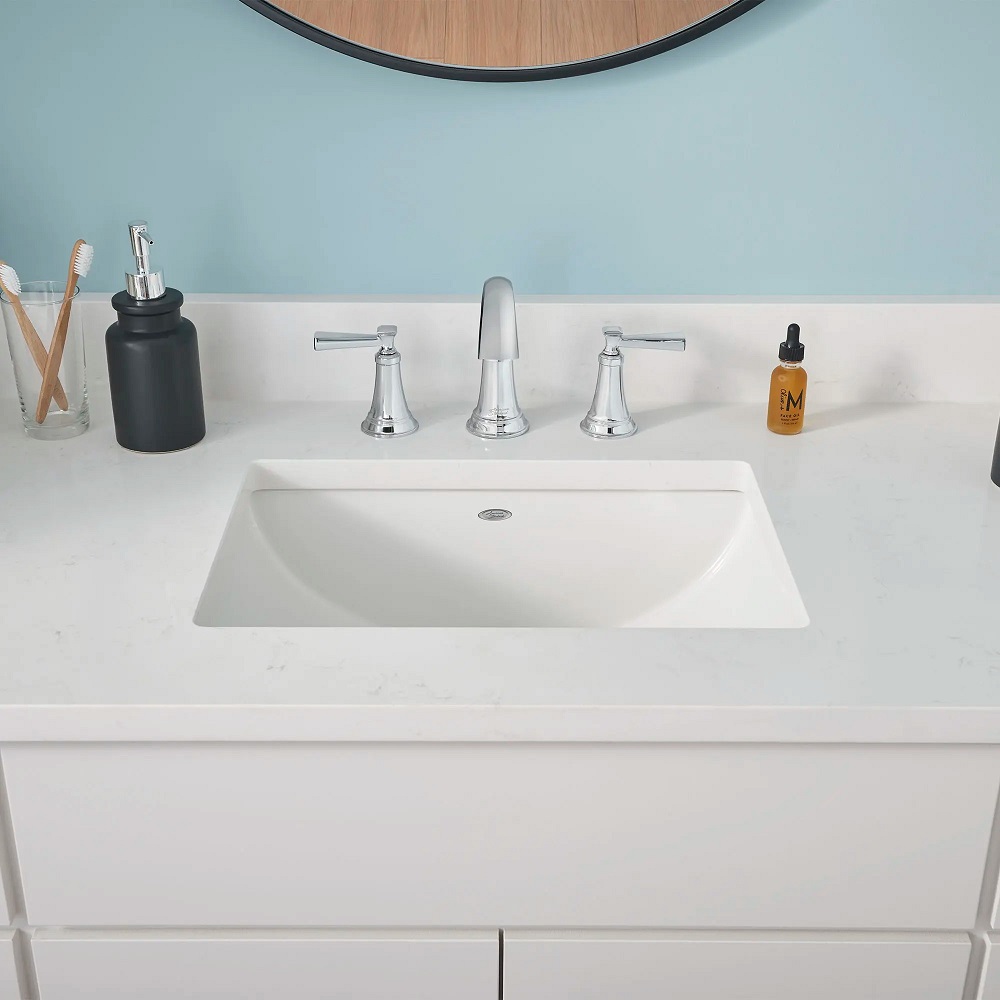Signs Your Bathroom Sink is Clogged
Recognizing the signs of a clogged bathroom sink is key for quick and effective action. Some red flags to watch out for include:
- Slow Drainage: If the water takes longer to drain than usual, it’s a clear sign of a blockage.
- Gurgling Sounds: Unusual noises from the drain could indicate trapped air in the piping system, suggesting a clog.
- Water Rising: Water building up without draining away could mean the clog is significant.
- Bad Odors: Foul smells emanating from the sink drain might be the result of accumulated organic material.
When you notice these signs, it’s best to act promptly to avoid a complete blockage. The bathroom sink won’t drain efficiently if a clog is left untreated and can create larger issues down the line. Engagement with the problem early can save time and resources.

Common Causes of Bathroom Sink Clogs
Understanding the common causes of bathroom sink clogs is essential in preventing them. Here are some frequent reasons your bathroom sink won’t drain properly:
- Hair Buildup: Hair is a leading cause of sink clogs. It can bind with grease and other sticky substances, forming a mass.
- Soap Scum: Over time, soap can accumulate and harden in your pipes, leading to a blockage.
- Toothpaste Residue: Thick toothpaste can contribute to the buildup inside the pipes.
- Small Objects: Items such as jewelry, bottle caps, or small toys can accidentally fall into the drain and cause a blockage.
- Mineral Buildup: In areas with hard water, minerals can deposit and narrow the pipes, restricting water flow.
- Oil and Grease: While less common in bathroom sinks, oil and grease can still make their way down the drain and solidify.
Recognizing these causes helps to take preventive measures and tackle clogs more effectively when they do occur. Regular maintenance can help keep your bathroom sink draining smoothly.
Initial Steps to Take Before Unclogging Your Sink
Before diving into unclogging your bathroom sink, some initial steps are crucial. These will ensure you’re prepared and may even resolve the issue without further action.
- Assess the Situation: Look for what’s visible in the drain. Sometimes, the cause of a clog is clear, like a clump of hair.
- Clear the Area: Remove any items around the sink to give yourself space to work. This includes toiletries and cleaning products.
- Check the Overflow: The overflow is a hole near the top of the sink. Make sure it’s not blocked, as this might cause drainage problems.
- Use Boiling Water: Sometimes, pouring boiling water down the drain melts away the substances causing the clog. It can be a quick fix if the blockage is minor.
- Try a Plunger: A small plunger designed for sinks might dislodge minor blockages. Give it a few firm pumps.
- Test the Tap: After each attempt, run the water to see if the sink drains. If it doesn’t, you’ll need to try other methods.
If these initial efforts don’t get your bathroom sink to drain, it may be time to try more specific remedies. In the next sections, we will explore some effective techniques like the plunger method and eco-friendly solutions.
The Plunger Method: A First Line of Defense
When your bathroom sink won’t drain, a plunger can often provide the solution. Here’s how to effectively use the plunger method:
- Choose the Right Plunger: Ensure you have a small, flat-bottomed plunger for sinks.
- Seal the Overflow: Cover the overflow hole with a wet cloth to create a vacuum.
- Position the Plunger: Place the plunger over the drain, making sure it’s submerged in water.
- Plunge with Pressure: Push down and pull up firmly, repeatedly, for about 20 seconds.
- Test the Drain: Lift the plunger to see if the sink starts to drain.
- Repeat if Necessary: If the sink remains clogged, give it a few more tries.
This simple method can clear clogs caused by everyday debris. However, if the sink still won’t drain after several attempts, it could indicate a more stubborn blockage. In that case, you may need to try other techniques as outlined in this guide.
Natural Solutions: Vinegar and Baking Soda
When your bathroom sink won’t drain, you can turn to natural solutions like vinegar and baking soda before more drastic measures. These household items are safe, eco-friendly, and often, just as effective as chemical alternatives. Here’s a guide to using them:
Step-by-Step Guide to Using Vinegar and Baking Soda
- Step 1: Start by pouring a pot of boiling water down the drain. This can loosen any soap scum or grime.
- Step 2: Next, dump about half a cup of baking soda directly into the sink drain. Let it sit for a few minutes to bind with the blockage.
- Step 3: Pour one cup of vinegar into the drain. You’ll see a fizzing reaction as the vinegar reacts with the baking soda.
- Step 4: Wait for about 15 minutes. During this time, the fizzing action helps to break down the clog.
- Step 5: Follow up with another pot of boiling water to flush everything away.
If the sink still won’t drain, repeat the process. This natural remedy may take a few tries, but it avoids the harsh chemicals that can damage pipes over time.
Remember, while these ingredients are common in household kitchens, they can pack a punch against minor clogs. They work by creating a reaction that helps to dissolve buildup in the pipes.
Using vinegar and baking soda regularly can prevent future clogs, keeping your sink draining smoothly. Give it a go before reaching for harsher solutions, and you might be surprised by its effectiveness.

Chemical Drain Cleaners: Use with Caution
When your bathroom sink won’t drain, reaching for a chemical drain cleaner might seem like a swift fix. But handle these powerful cleaners with care. They contain harsh chemicals that can eat away at clogs but also at your plumbing. Always read instructions before use, and follow these steps to use them safely:
- Read the Label: Before you begin, read the product label for specific directions and warnings.
- Ventilation is Key: Open windows or turn on the fan. Good airflow helps reduce fumes.
- Use Gloves and Goggles: Protect your hands and eyes from the chemicals.
- Pour with Precision: Pour the cleaner directly into the drain, avoiding splashes.
- Wait as Directed: Allow the cleaner to work for the time stated on the label.
- Flush with Water: Afterward, flush the sink with plenty of water to rinse the chemicals away.
While effective, these cleaners are not always the best option. They can damage older pipes, septic systems, and are not eco-friendly. If repeated use is needed, this might indicate a bigger issue that requires a plumber. Plus, they are not a good choice for regular maintenance due to their harsh nature.
For a clogged bathroom sink, consider alternatives like a plunger or natural cleaners before going chemical. If you must use a chemical drain cleaner, do so sparingly and cautiously to ensure your pipes’ longevity and safety.
Plumbing Snake: When to Use It
When your bathroom sink won’t drain, a plumbing snake can be a great tool. A plumbing snake, also known as a drain auger, is useful for tough clogs that plungers and natural solutions fail to clear. Use it as follows:
- Inspect the Clog: If the clog is deep or the water won’t drain at all, a plumbing snake might be necessary.
- Prepare Your Area: Lay down towels to protect your bathroom surfaces and wear gloves for hygiene.
- Insert the Snake: Slowly feed the snake into the drain until you find resistance from the clog.
- Rotate the Handle: Turn the snake’s handle clockwise to catch the debris. This helps break up or hook onto the clog.
- Retract and Remove: Pull the snake from the drain, bringing up the debris. Be prepared for a mess.
- Run the Tap: Test your sink by running water to see if it now drains smoothly.
The snake is especially effective against clogs caused by a solid blockage, such as small objects. It reaches deeper than a plunger and can navigate the curves of the pipes. If you’ve tried the other methods and the bathroom sink won’t drain, using a plumbing snake might do the trick.
Preventing Future Bathroom Sink Clogs
To keep your bathroom sink draining well, prevention is key. Regular maintenance can help avoid clogs before they become a problem. Try these tips to prevent future clogs:
- Use Strainers: Place mesh strainers over the drain to trap hair and debris.
- Rinse Regularly: Run hot water down the sink after each use to clear away any residue.
- Brush Before Washing: Brush your hair before you wash it to minimize hair fall in the sink.
- Discard Oil Properly: Never pour oil or grease down the sink; throw it in the trash instead.
- Soft Water Solutions: If you have hard water, consider installing a water softener to prevent mineral buildup.
- Regular Natural Cleaning: Once a month, use baking soda and vinegar to keep pipes clear.
By following these simple steps, you can reduce the risk that your bathroom sink won’t drain due to a clog. Keep your plumbing healthy with these preventative habits.

When to Call a Professional Plumber
Despite your best efforts, there are times when a bathroom sink won’t drain, and you need to call a professional plumber. Knowing when to bring in the experts can save you time, effort, and protect your plumbing from further damage. Here are scenarios when it’s wise to call a plumber:
- Recurring Clogs: If clogs happen often, a deep-seated issue may exist.
- No Success with Tools: When plungers, snakes, and chemicals fail, a plumber can help.
- Water Backflow: Water backing up in other drains signals a significant blockage.
- Odd Noises: Persistent gurgling sounds can suggest a problem in the mainline.
- Lack of Tools: Lacking the proper tools to handle stubborn clogs is another sign.
- Water Damage: If leaks cause water damage, professional intervention is crucial.
A professional plumber will have specialized tools and expertise to diagnose and fix the problem effectively. They ensure the repair is done safely and that your bathroom sink drains smoothly again. It’s always better to call sooner rather than later to prevent minor issues from becoming major ones.


